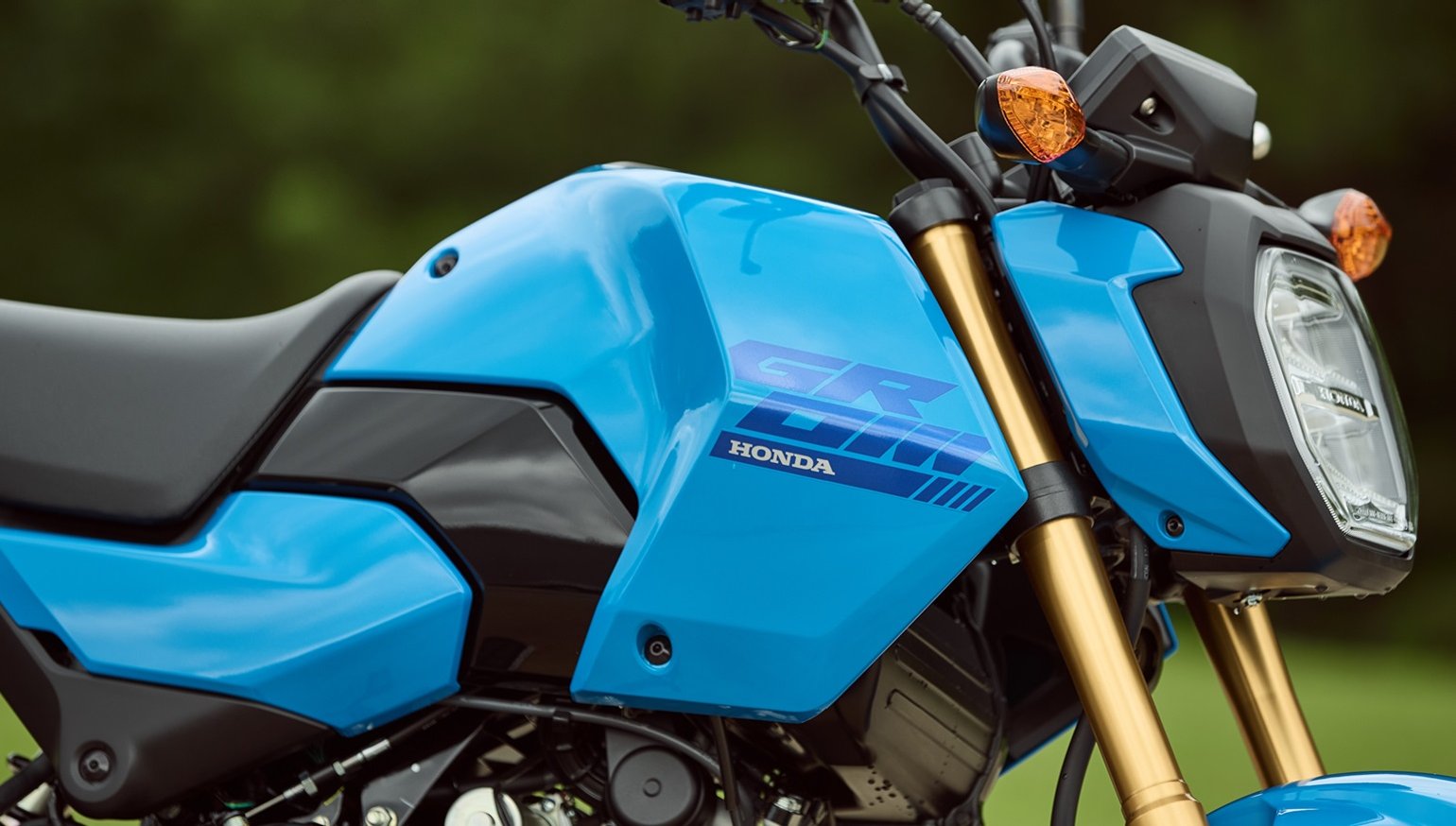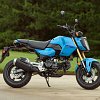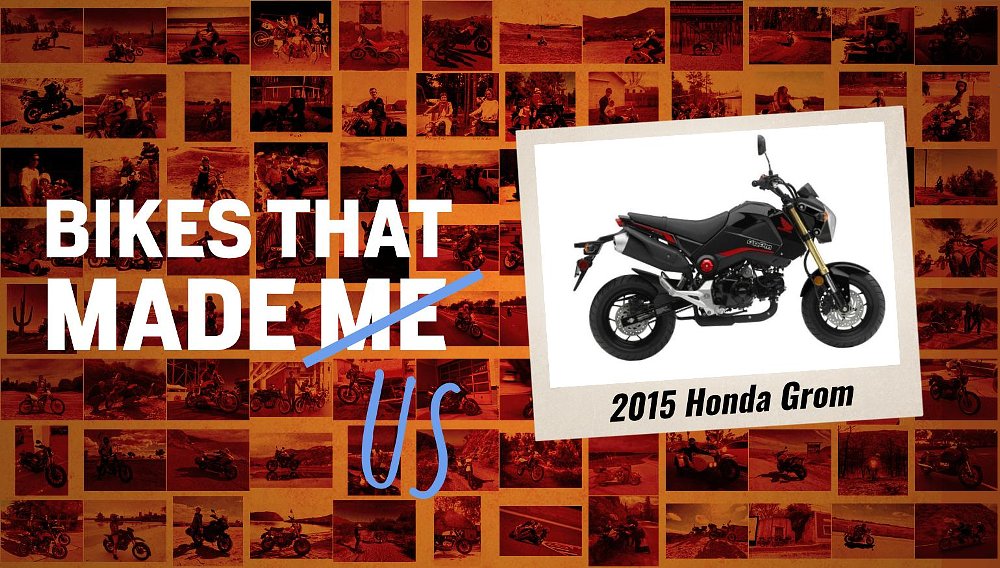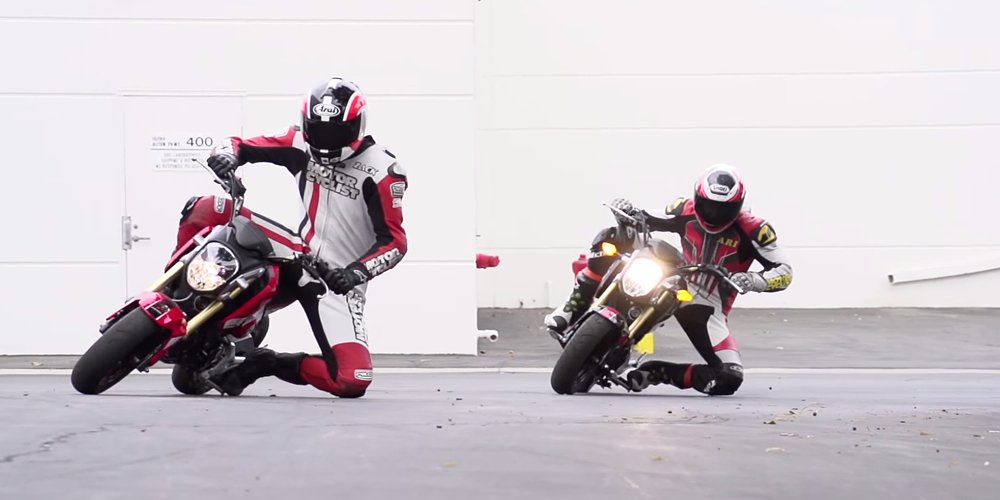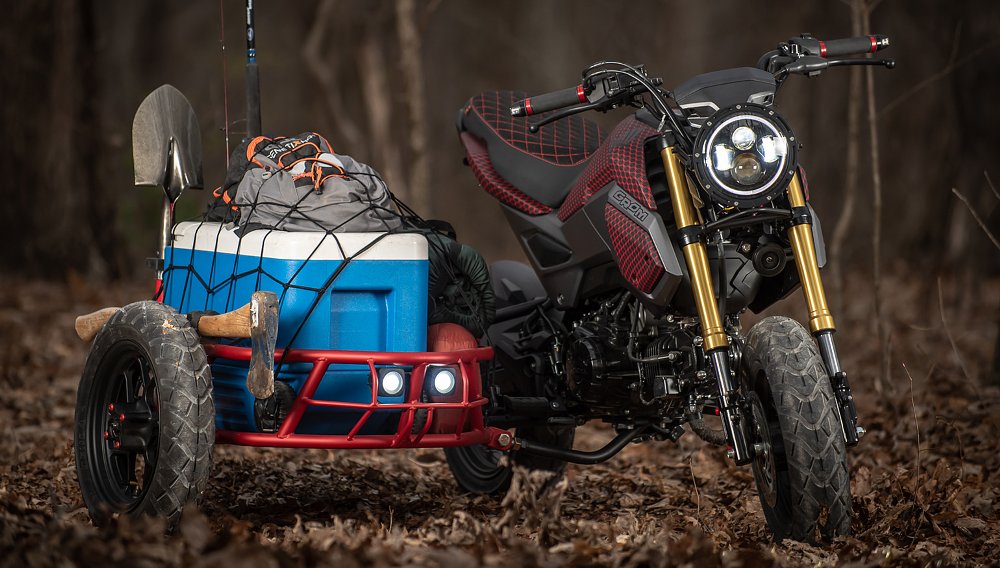Bodywork and bellypan.
If you’re wondering what’s new for the 2025 Honda Grom, this could be a three-word article. There are no substantial changes to Honda’s cult classic 125 besides the way it looks… and the plastics you’ll need to order if you want to change up the appearance or repair some scuffs from dank whoolies gone south in an empty parking lot. That said, I have a lot more than three words to say about this fourth-gen model, and in my opinion, the Grom’s lack of radical change should be the highlight of this story. Here’s why.
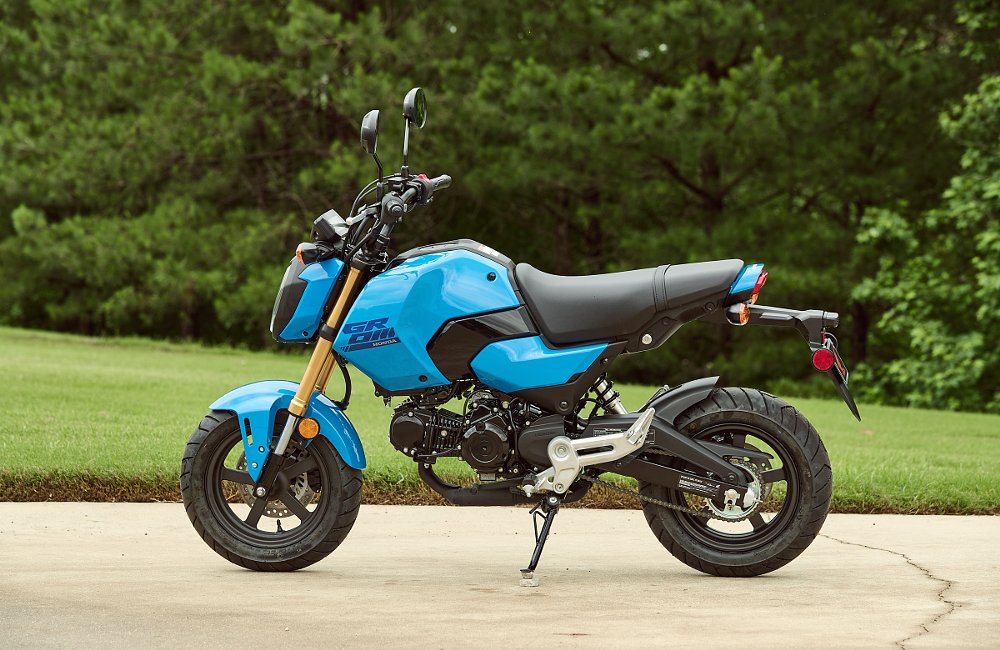
Honda introduced the wee Grom for the 2014 model year. For those of you who still have all 10 fingers to count on, that means this little nugget has been bringing affordable joy to riders for a decade, and this newest generation says that the party ain’t stopping. In those same 10 years, the Grom brought some joy to the bean counters at Honda, too. This pint-sized funmobile has topped Honda’s sales charts in the United States since it was introduced. Only the barebones Navi managed to dethrone it for one year, and the Grom is already back on top.
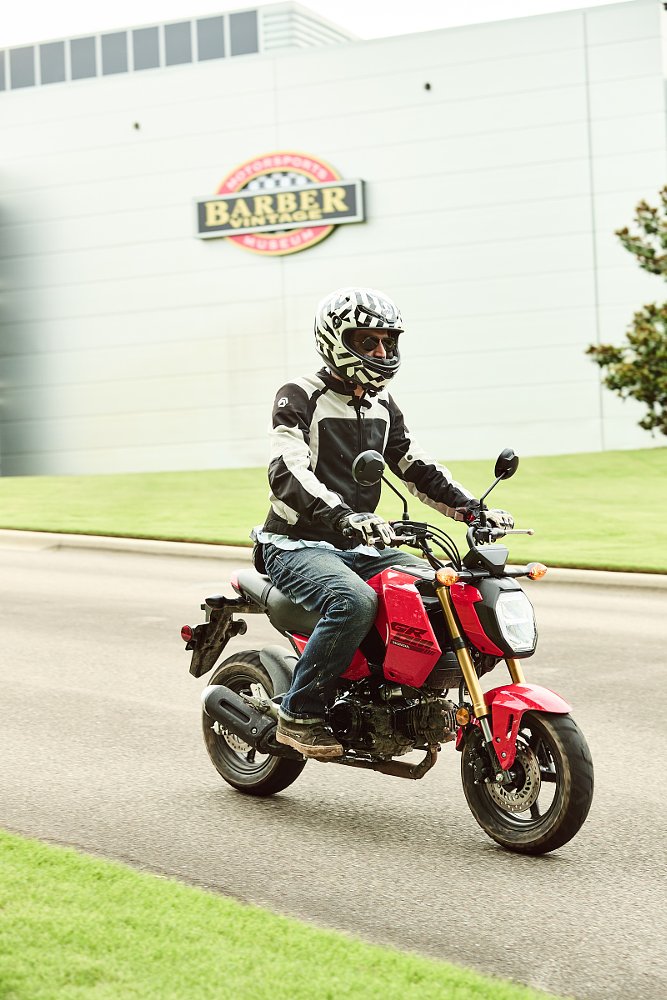
By spec sheets alone, the Grom has never been anything special. It makes less horsepower than my lawnmower, uses a basic air-cooled engine architecture that’s nearly as old as Honda itself, and barely fits a large adult. Honda sells several other models in this class that are nowhere near as popular. What gives? The short answer is that this miniMOTO, to use Honda’s terminology, seems purpose-built to become whatever you want it to be. Inexpensive second motorcycle for the garage? Town runabout? Pitbike, mini stunter, outrageous custom, or full-on racer? There is practically nothing that hasn’t been tried at this point.
With the exception of some mild updates for the third-gen in 2022 (which included the jump from a four-speed trans to a fiver and a real oil filter), the Grom hasn’t changed much in all these years. You don’t see Toll House changing up that cookie recipe on the back of the chocolate chip bag, do you? Same reasoning applies here.
New for 2025: The whole enchilada
Again, the only notable changes for the new Grom involve bodywork. That might be welcome news to those who didn’t like washers the size of mini CDs all over the tank and side covers on the previous (JC92) generation. I didn’t mind the look, but I also recognize that Honda needs to keep the Grom fresh somehow, and the new styling is probably a step in a more mature and less Meccano direction.
I’m sure the aftermarket will be along shortly with every color and graphic option imaginable for the newcomer. Redesigned bits include the headlight cover, front cowl, shrouds, fuel tank cover, tank cap cover, and side covers, plus that optional bellypan.
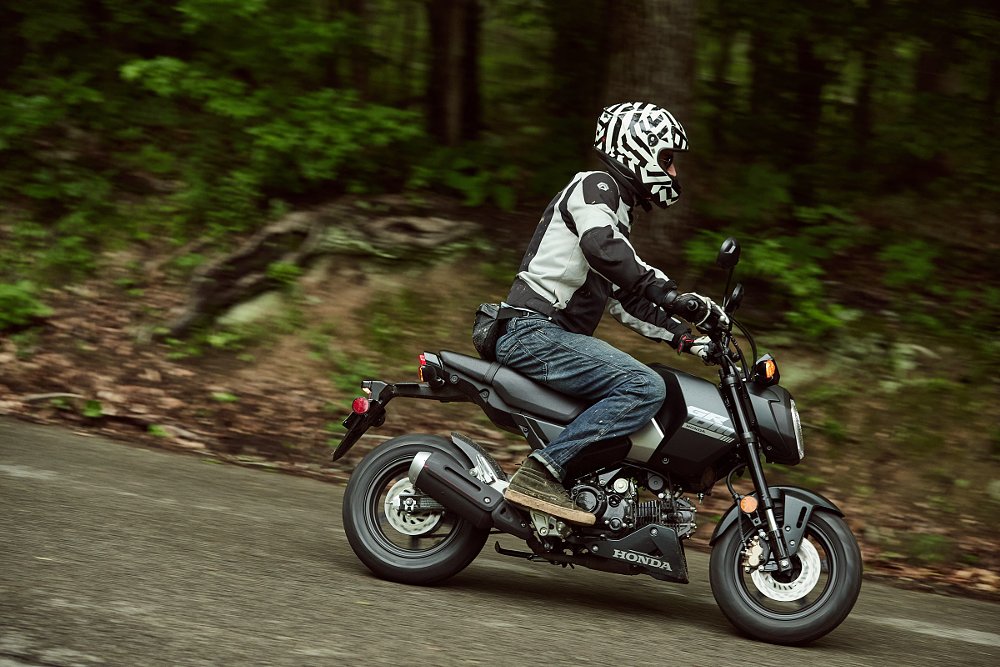
The base Grom (Candy Blue, Pearl White, or Cherry Red) starts at $3,599. That’s a $200 increase over the last gen’s base price. The next step up is the $3,699 Grom SP, available in Matte Black Metallic only, which adds a tidy chin spoiler (under cowl, as Honda calls it) that drew a lot of attention at Barber. The top trim Grom ABS ($3,799) gets Pearl White paint, single-channel (front-only) ABS, and an IMU for customers seeking some modern safety tech.
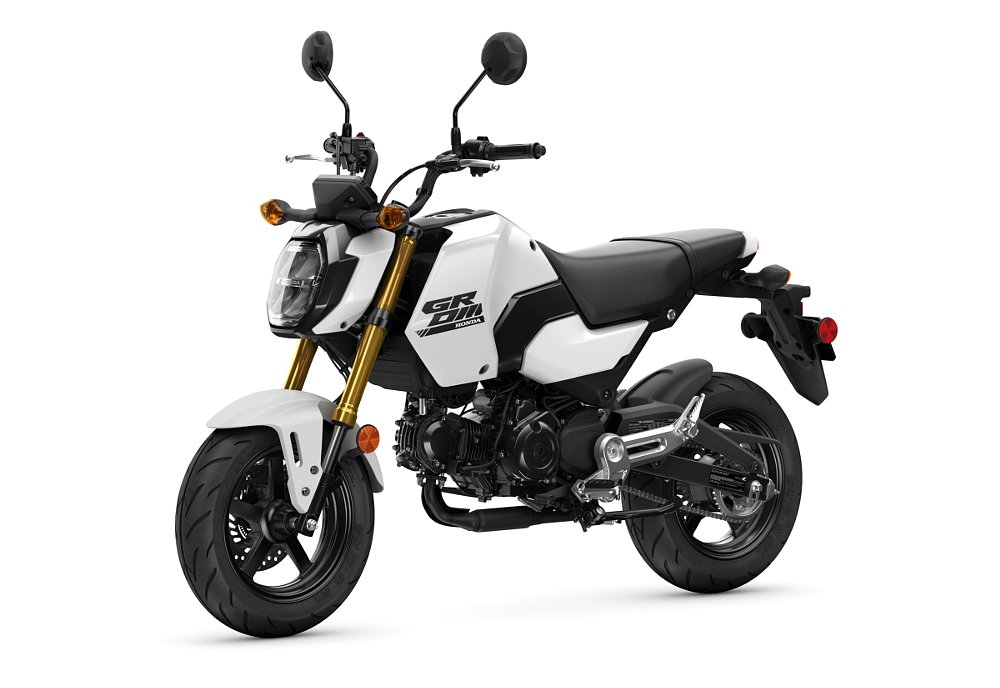
My cheapskate habits are not new to the pages of Common Tread, so I don’t think anyone will be surprised to hear my appreciation for the Grom’s simplicity and value as a new motorcycle purchase — mini or otherwise. The fun-for-buck ratio is tough to beat. Service and consumable costs are low, parts availability is excellent, DIY forum support is extensive, and if you’ve ever wanted to learn how to work on your own motorcycle, a Grom is a smart place to start. Then there's the social aspect that comes with ownership. If you like group rides, clubs, and events, it's hard to go wrong here.
But if the previous models are so similar, would a used Grom be an even better deal? A quick peek at CycleTrader and local classifieds shuts that idea down in a hurry, at least if you want a five-speed within 300 miles of Philadelphia. Groms historically hold their values well, and unless you find an example that’s modified just the way you like it, I say you’re better off rolling your own using a new example.
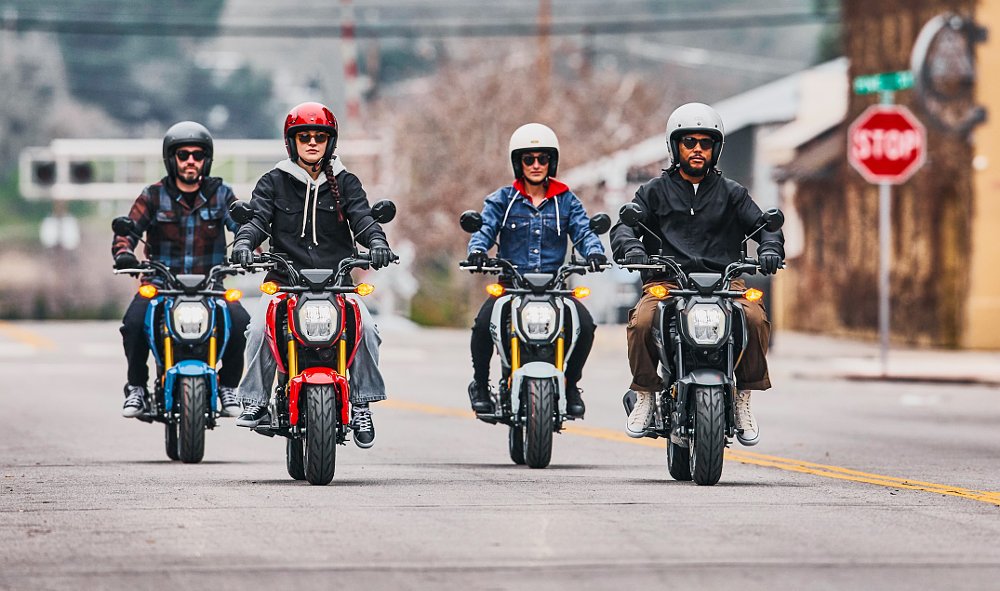
According to Honda, the core customer for the Grom hasn’t changed much over the years. Groms are typically purchased as an additional bike for the garage. Owners skew younger, between 20 and 30 years old, and they value outdoor adventures and good times with their pals. An unspoken aspect of this demographic is financial. Despite the slight price increases, Groms are considerably easier on the wallet than most new motorcycles, especially for the average 25-year-old rider. Of course, there are all sorts of people besides younger riders who buy Groms, and for just as many reasons. For example, I can’t count the number of times I’ve seen one hanging off the back of a giant RV for short-range transportation around campgrounds and parks. A small bike like this would be appropriate for a tiny garage or an apartment with limited parking, too.
There’s one final bit of Grom news to cover for 2025: Honda now offers three accessory packages for the Grom that’ll be available from dealers.
- Hyper Collection: Windscreen, windscreen stay, handguards, and under cowl
- Adventure Collection: Handguards, windscreen, windscreen stay, rear carrier, saddlebag, and saddlebag mount
- Scads Collection: Presumably for carrying scads of cargo? Rear carrier, saddlebag, saddlebag mount, seat bag, and seat bag attachment kit
From the factory, Groms aren’t set up to haul much, and adding cargo capacity seems like a surefire way to get more value out of your new mini. So how’s it ride?
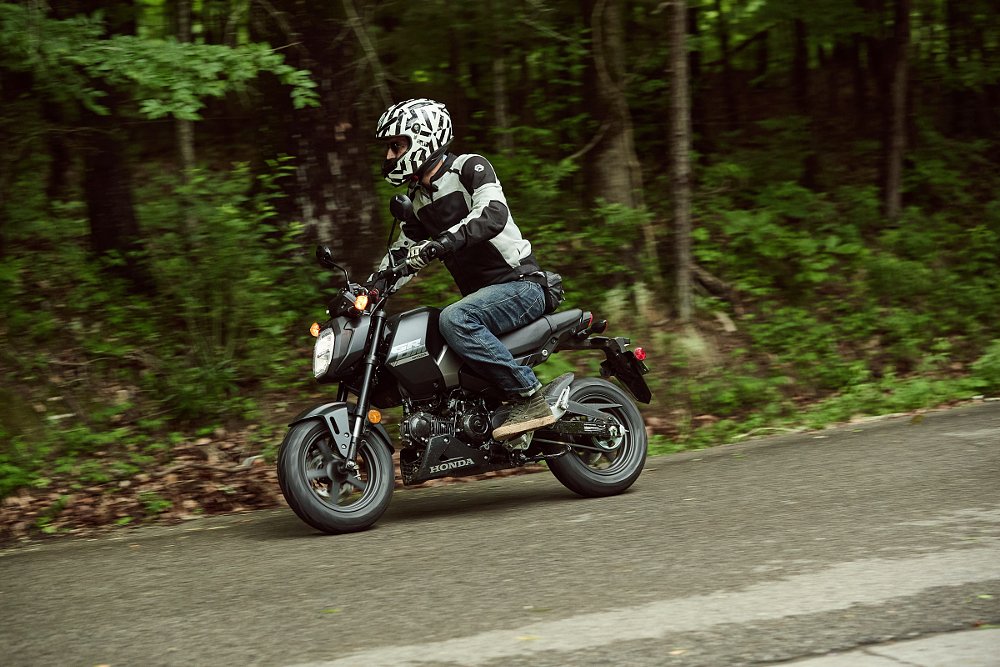
Gen-four Grom: Riding impressions
Unless you’ve been living under a DR650 for the last 10 years, you’ve probably tried a Grom at some point. The 2025 Grom rides just like the previous generation, and that’s a good thing. Amusingly low and compact, the bike’s stubby chassis, 12-inch alloy wheels, and short wheelbase allow it to flick and turn with almost no effort. Steering input is laughably light.
The handlebar encourages a slightly forward lean from the rider, which is a good thing. More weight over the front wheel of a Grom translates to more confidence in turns, and that makes the bike all the better when thrashing it around some curves.
Honda’s trusty 124 cc engine returns, and it is the centerpiece of this tiny motorcycle. Big Red built its reputation on horizontal singles just like this one, and that expertise pays off with a plucky little two-valver that’ll hold wide open for as long as you’re willing to pin the throttle. Anything beyond 7,500 rpm is unnecessary flogging, although the tach runs almost a grand higher than that.
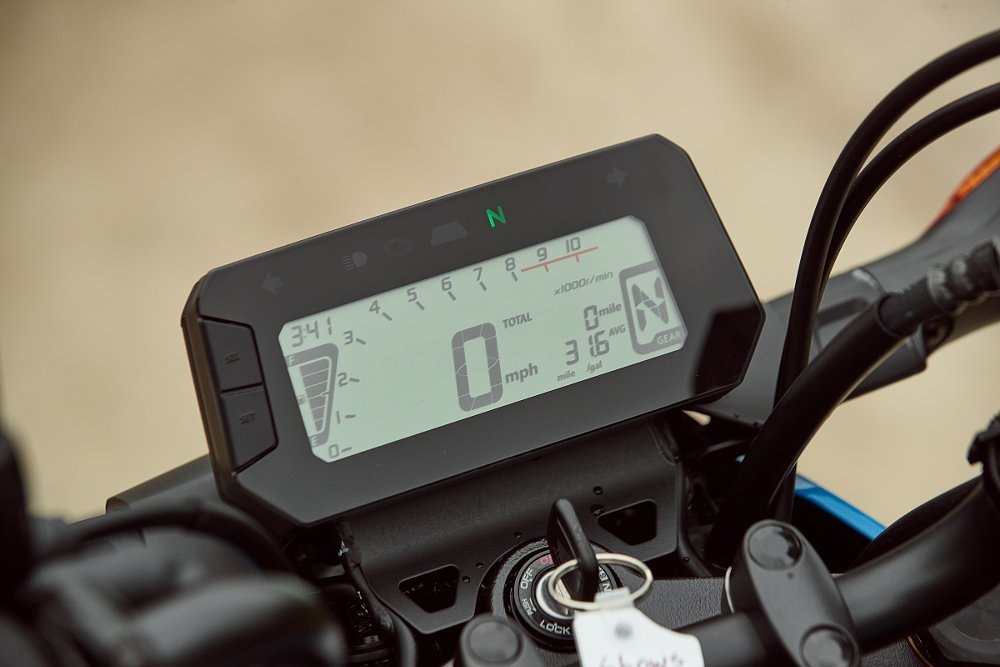
The basic digital display is laid out well and easy to read, but it is practically useless most of the time. The bike is so thrifty that the gas gauge rarely moves, so poky that that speedometer is mostly for decoration, and so sensitive to gear selection that the gear indicator is redundant. In all honesty, I used the small digital clock at the upper left of the dash more than any of the instruments while I was riding.
The five-speed trans, carried over from the previous gen, will carry most riders up to 50 mph, then gradually approach a mile a minute. Take a Grom downhill… with a tailwind… in the direction of the rotation of the Earth… and you may see higher than 65 mph with your chin on the tank and some drafting. No sane person is buying this bike as a freeway flier, anyway.
No, you buy a Grom for the fun of it. This featherweight (224 pounds, ready to ride with a full tank) is just the ticket for laughing in your helmet. The bike’s “honey, I shrunk the motorcycle” stature is just right for running errands, short commutes, and mobbing around with friends on similarly ridiculous vehicles. Groms hold a special appeal for the motorcycle-addicted because of the traditional clutch setup. If you want to learn to ride a shifter bike, or use your clutch skills for mischief, the Grom is worth a test ride. Not many vehicles will happily run all day, banging off the rev limiter half the time, while still returning well over 100 mpg.
The Grom is a choice platform for building skills before working up to a larger motorcycle, too. Riders who learn on minis like this will not have much trouble transitioning to the current crop of entry-level “full-size” options like Honda’s own CB300R, Yamaha’s MT-03, KTM’s 390 series, or other bikes in that class. And riders coming from larger machines should feel plenty comfortable with the Grom’s ergos when swapping between rides. Enough similarity remains between this miniMOTO and a modern standard to reward your riding skills. A Grom is motorcycling’s Easy Mode. I know a few riders who never bothered to “graduate” to something larger than their Honda minis after years of ownership.
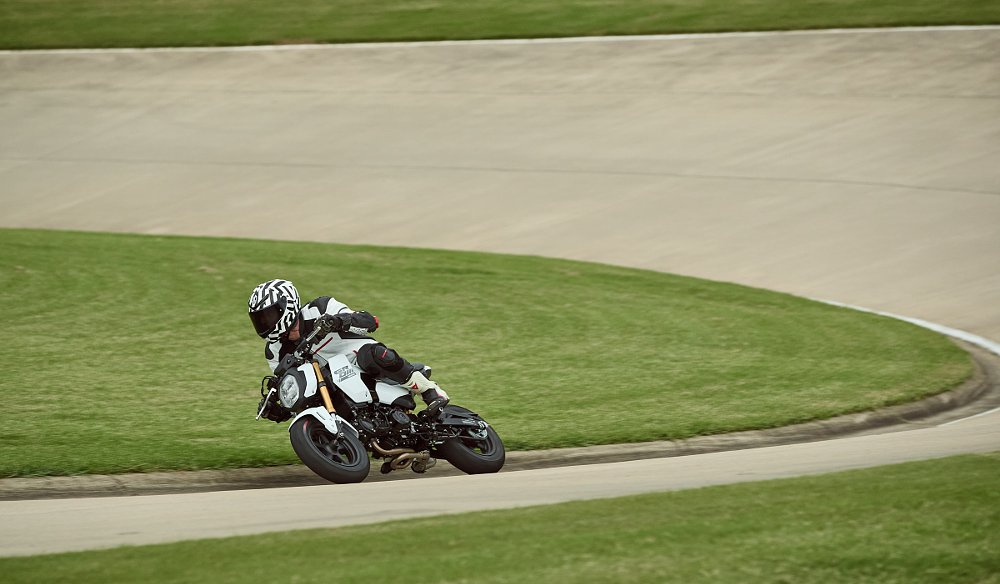
Shifting is slick, brakes are totally adequate, and the clutch lever pull is light as they come. The stock suspension is probably good ‘nuff unless you are large, fast, or large and fast. To address those concerns, I’d take a look at the sprawling range of fork and shock upgrades available for this platform. The most limiting factor for carving up your local backroads will be the stock footpeg position. This problem, like nearly everything on a Grom, can be solved with a bolt-on aftermarket solution. The best investment of all may be better rubber at both ends. Tires are available for every conceivable Grom use case, from roadracing to dirt. Ride the stockers down to the wear bars, pick your favorite type of terrain, and throw on a new set of buns for that purpose. I bet you’ll like your Grom better than ever after a modest investment in rubber.

The Grom’s downsides are as well known as its highlights by now. It is too slow to safely use on most large roadways, its baby wheels don’t take bumps kindly, its passenger accommodations are adorably optimistic, and its ergos may be too cramped for long-legged folk. Let me put it this way: If you can’t see the Grom’s major limitations from a single photograph, I don’t think there is anything I could write that could help you.
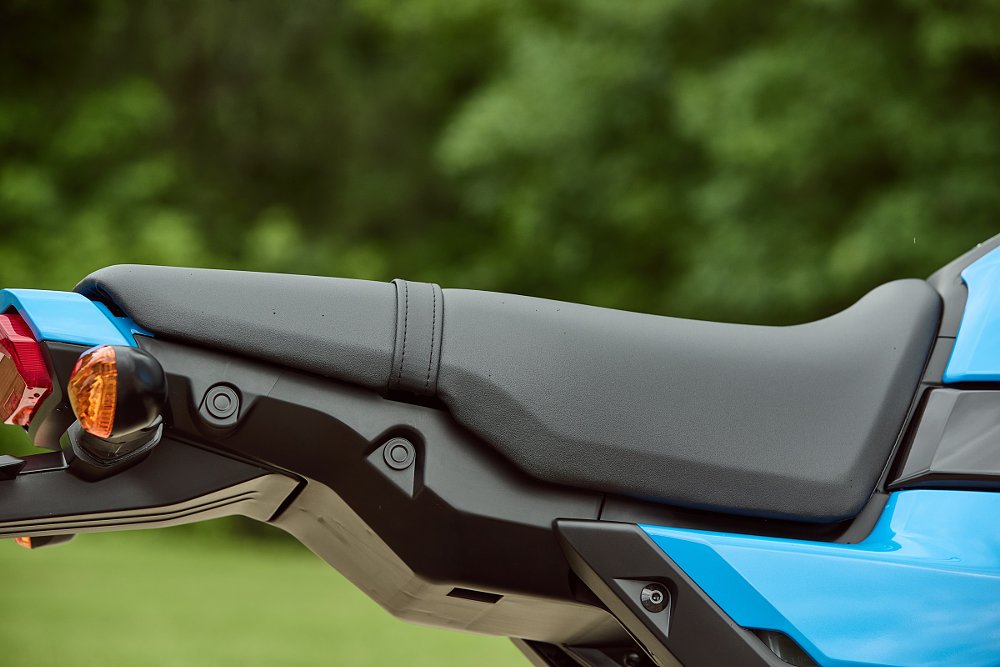
Takes Grom to know Grom
At this point, I’ve tried almost every generation of Grom, Monkey, and Super Cub out there. (I’m trying to avoid new Trail 125s so that I won’t be tempted to buy one.) These machines are consistently solid and shockingly durable. Build quality on the new Grom is up to the usual standards, including nice switchgear, rich paint, and respectable fit and finish throughout. Yes, these bikes are made to hoon, but they also feel like they’re built to last — a quality that is often missing among the competition. For 2025, the Grom remains the gold standard for street playbikes, and that brings us full circle to what I wrote at the beginning of this story: Not much has changed, and not much should change for Big Red’s little 125.
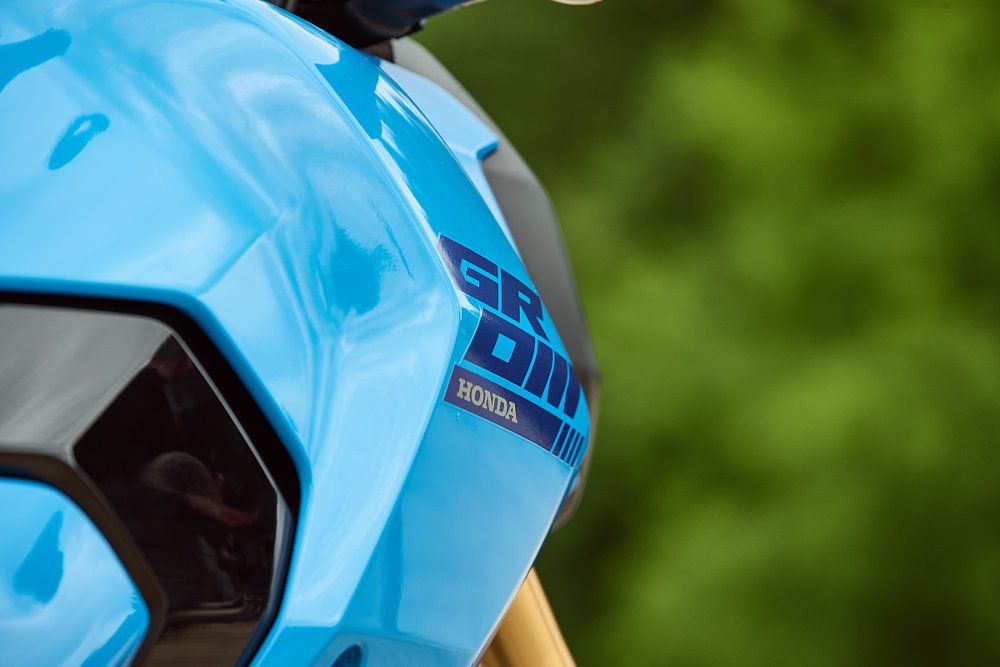
There will surely come a day when the Grom must be dropped from Honda’s lineup. We’re 10 years and hundreds of thousands of units into this story, and that day does not seem to be coming any time soon. All too often, recognizing a good thing is the hardest part of keeping it.
| 2025 Honda Grom | |
|---|---|
| Price (MSRP) |
$3,599 $3,699 (Grom SP) $3,799 (Grom ABS) |
| Engine | 123.9 cc, air-cooled, two-valve, single |
|
Transmission, final drive |
Five-speed, chain |
| Frame | Steel backbone |
| Front suspension | 31 mm inverted fork; 4.3 inches of travel |
| Rear suspension | Single shock; 4.1 inches of travel |
| Front brake | Single two-piston caliper, 220 mm disc, optional ABS |
| Rear brake | Single one-piston caliper, 190 mm disc, no ABS |
| Rake, trail | 25 degrees, 3.3 inches |
| Wheelbase | 47.2 inches |
| Seat height | 30.0 inches |
| Fuel capacity | 1.6 gallons |
| Tires | 120/70-12 front, 130/70-12 rear |
| Claimed weight | 224 pounds (227 with ABS) |
| Available | June 2024 |
| Warranty | 12 months |
| More info | powersports.honda.com |




